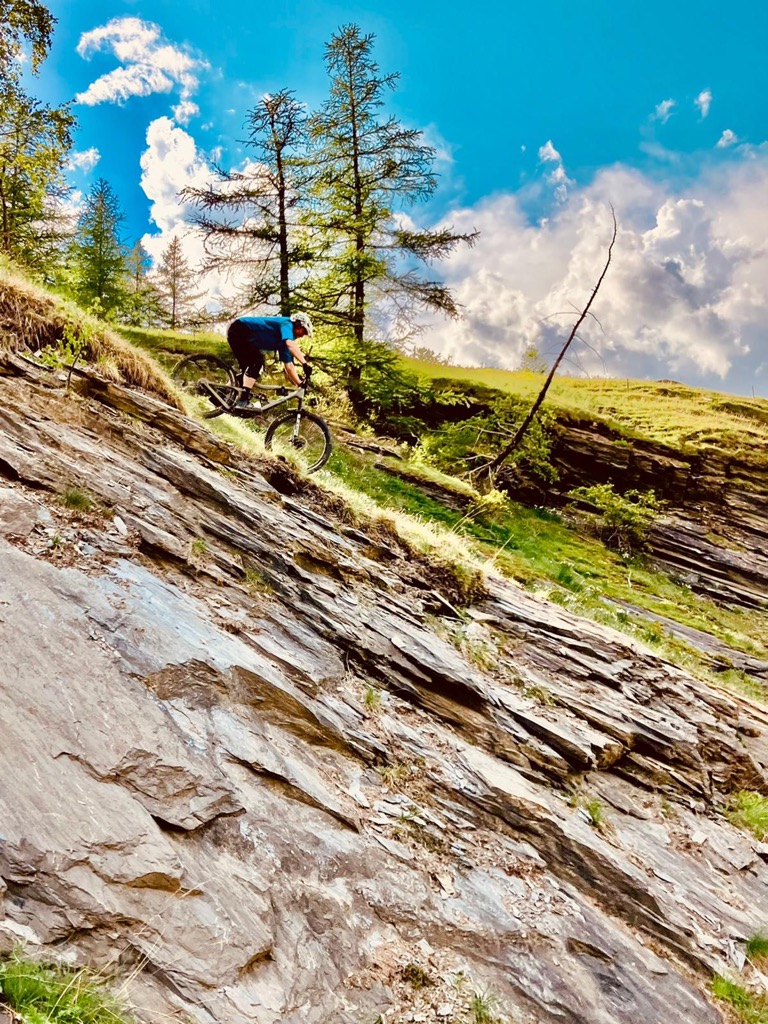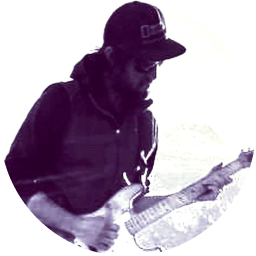A Beginner’s Bible
By Sergei Poljak
Summer is at our doorstep. The time has come for us to step outside, spread our wings, and embrace the sun. As the solar radiance replenishes our depleted Vitamin D, we come to see life’s mission more clearly, and the desire to explore new places and experiences becomes overwhelming.
If you haven’t already considered it, you should harness that summer motivation to start mountain biking. Or, perhaps you’ve been dreaming of becoming a mountain biker for years but haven’t gotten around to it. Either way, I’ll provide a complete breakdown of steps to becoming a rider and finding your next passion. It’s more than just buying a bike; there are plenty of tips and tricks to help you along the way.
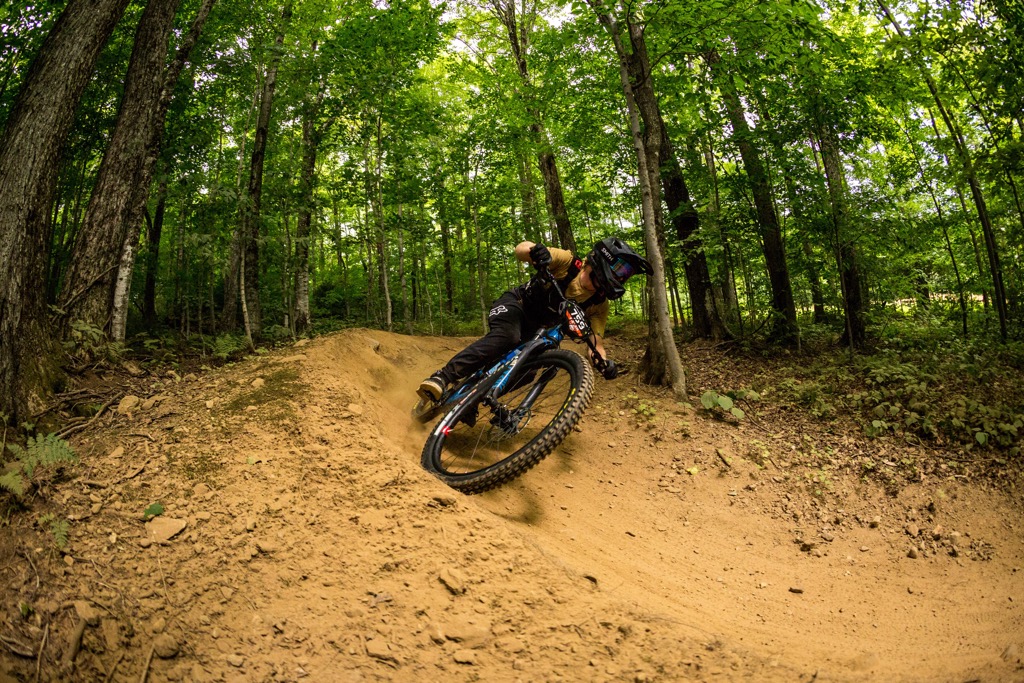
Why Should You Start Mountain Biking?
Mountain Biking Is Hard
Look, I get it. Mountain biking (MTB) is a tough sport to start. First of all, there’s the cost. The bikes are notoriously expensive. And you know what’s even more expensive than a bike? Maintaining that beast.
Secondly, you can’t really fake mountain biking the way you can with other sports. If you ski a couple of weekends a year, it’s not hard to figure out how to make it down the groomers without killing yourself. Meanwhile, entry-level climbers can dangle around on a rope at the local gym. Until the advent of eMTBs, you had to be fit to be a mountain biker. And even with the advent of eMTBs, it hurts when you fall. And you will fall.
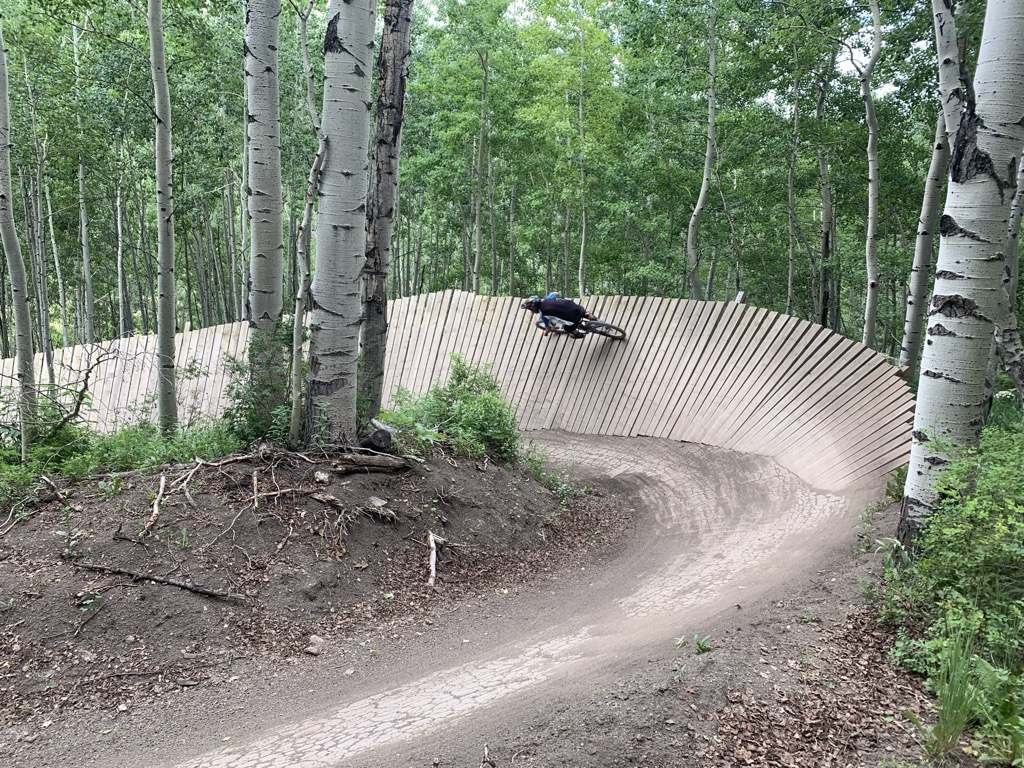
Why Bother?
So, if mountain biking is so hard, why bother even trying? Aren’t there already enough troublesome things in life? A few things make MTB worth every cent and headache.
- The Flow State: The hallowed flow state is the number one reason you should start mountain biking. It’s hard to pinpoint exactly what a flow state is scientifically, but the phenomenon is well-known. You can experience a flow state with anything, from cooking to playing music to race-car driving. It’s when you achieve 100% concentration and perform a complex task without any awareness of putting effort into it. Even though you’re flying down a mountain, there’s a zen aspect to it; it’s like the cousin of meditation. For me, mountain activities, namely skiing and mountain biking, have opened up the flow state and changed my life.
- Health and Fitness: Your body isn’t a temple; it’s the vessel you’re destined to spend the rest of your life in. Still, it can be hard to commit to an exercise routine. I don’t know about you, but I get a bit bored with fitness routines like running, going to the gym, doing spin classes, etc. All those things can be great exercise, and kudos to those who reach a flow state during their running routine.
Cycling is one of the best forms of exercise. The motion of pedaling a bike is much more forgiving on your joints, making it easier to do long-duration aerobic exercise. After conditioning like this, the heart muscle adapts and develops a higher stroke volume, requiring fewer beats to pump the same amount of blood. For this reason, cyclists have the lowest resting heart rates of any athlete.
Aerobic conditioning is extraordinarily challenging, especially from a mental perspective. Mountain biking provides the motivation to push myself aerobically, which I find lacking in urban settings. The only flipside to the health benefits is the high potential for medium-severity injuries, like broken wrists and collarbones.
- Community: According to the American Psychiatric Association, 30% of young people aged 18-34 are lonely every day. And it’s not just the U.S.; this trend is rising worldwide. You could spend a year walking around the city and never interact socially with anyone. But mountain biking provides instant common ground and purpose to start a friendship. You can meet people on the trail or right in the parking lot. You might not be soulmates for the rest of your lives, but most mountain bikers have a lot of common ground. Plus, everyone knows that it’s more enjoyable (and safer) to ride with others.
Choosing Your First Bike
Like horseback riding, mountain biking requires a noble steed. Like horses, there are many different breeds to choose from. Moreover, these beasts are expensive to buy as well as maintain.
Therefore, this is an important decision for your future mountain biking career. Here are a few tips to consider before investing in a new bike.
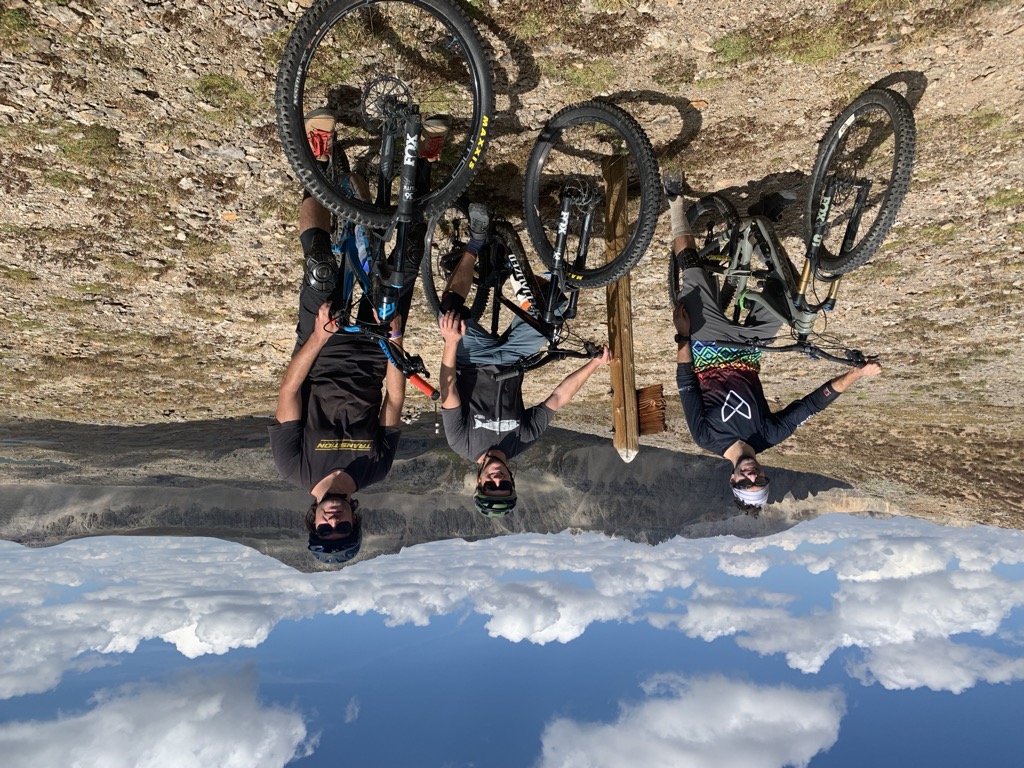
Classic vs. eMTB
Aye, here’s the rub. The big question used to be hardtail vs. full suspension or 29” vs. 27.5” wheels, but now eMTBs are carving out a significant market share.
I now see more eMTBs on the trails than humble pedal bikes. For years, it was in vogue among mountain bikers to throw shade at eMTBs. Simply put, eMTBers were not seen as “legit” mountain bikers.
Today, the technology has advanced, and the whole industry has coalesced around eMTBs. The bike media has embraced eMTBs by marketing their pros and showcasing all the raddest professional riders on their new electric setups. We’ll never be able to get to the bottom of the issue here, so I’ll just outline the pros of each from a beginner's perspective.
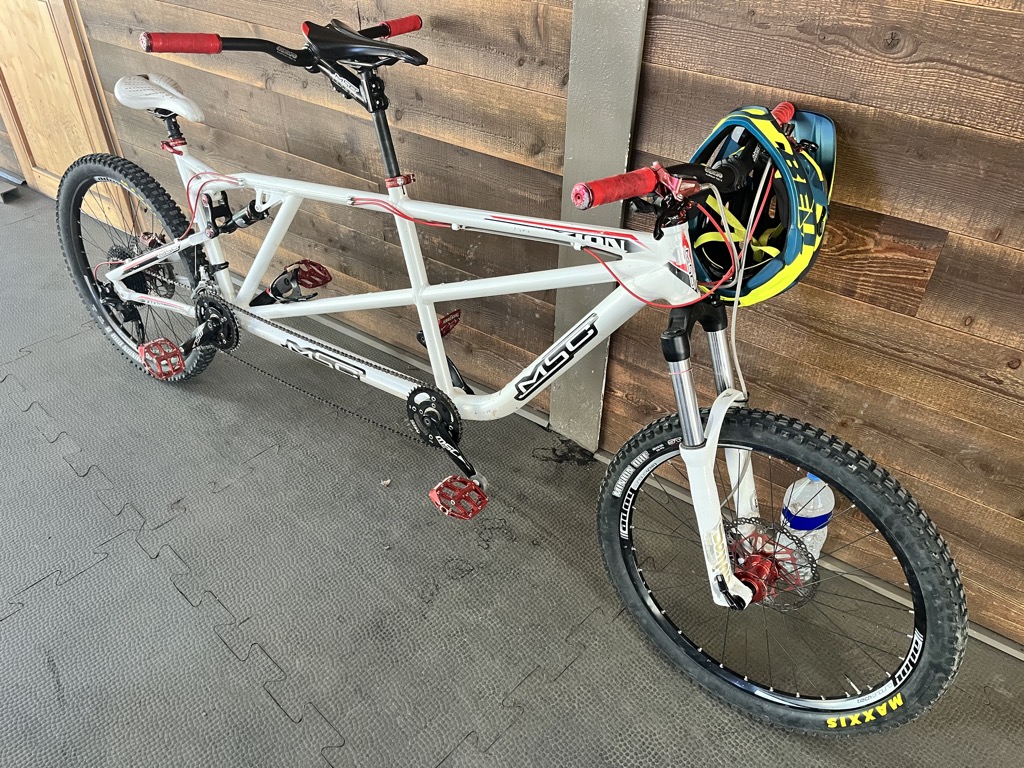
eMTB Pros
- More ride time means more experience. Getting efficient at riding with regular pedal bikes can be too arduous for many people. eMTBs help.
- More downhill. Mountain biking has always been about the downhill, and eMTBs make this accessible to many more people.
- High-speed cross-country riding. For many people, there are plenty of trails but no mountains around home. Cross-country riding is strenuous on a classic bike; you really have to dig into the pedals. It’s become much easier to carry exciting speed through these sections on an eMTB.
Classic Bike Pros
- Strength. If you pedal your bike for long distances, especially up big hills, you'll develop plenty of lean muscle mass and aerobic capacity. While it’s possible to pedal as hard on an eMTB, the vast majority of riders do not push as hard.
- Technicality. Classic bikes are much lighter and, therefore, much easier to manipulate. That means techniques like bunny-hopping over rocks and logs, doing nose manuals around turns, and popping off trail features for a bit of airtime. All these flourishes bring zest to the sport as you progress. For a beginner learning with an eMTB, you won’t be playful with the bike. It’s just too heavy. If anything, it will be easier to just plow straight down the trail with the heavy eMTB without much technical skill.
- Cost. Just as classic bikes became more affordable, eMTBs came along and made everything expensive again. Last year, as the COVID supply glut began to take hold, I started seeing expert-level builds in the $3000 range or even less. According to ebike-mtb.com, the average price of about two dozen eMTBs tested in 2024 was a staggering €10,374. Incredibly, this was even about €800 cheaper than last year.
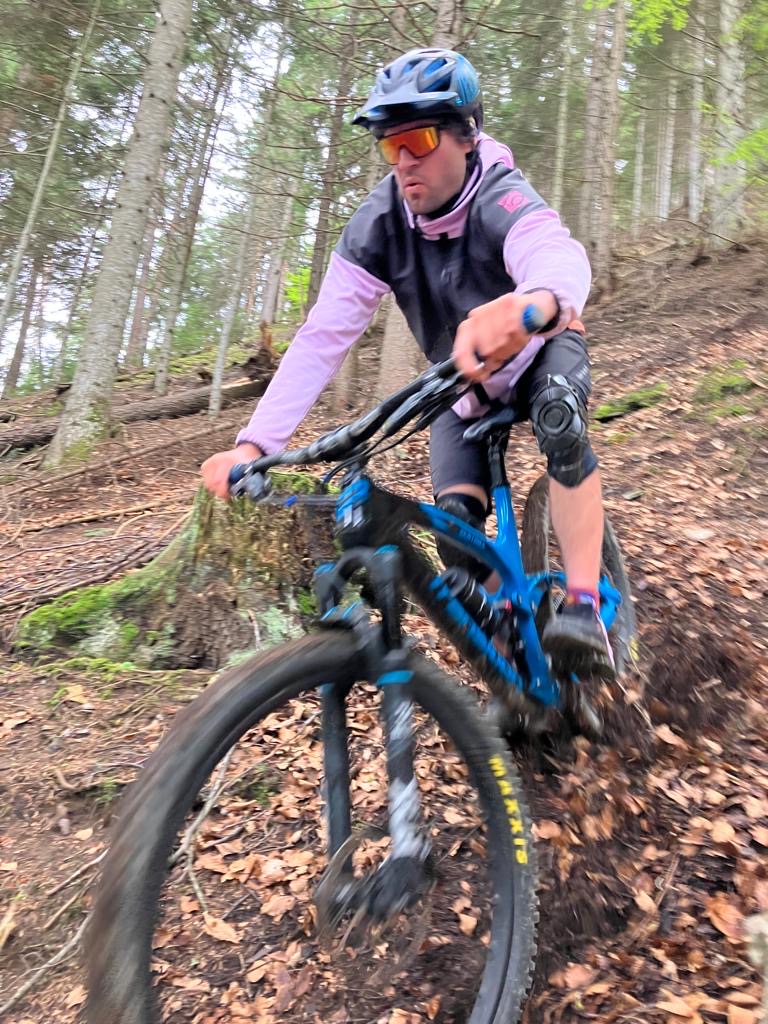
Hardtail vs. Full Suspension
Here’s another common question in the bike sphere: hardtail or full squish? Full-suspension bikes are far more expensive but aren’t de facto “better.” There’s plenty of terrain where a hardtail dominates over a full suspension on the fun factor.
Hardtail Pros
- Cost: Hardtails are about half the price of full-suspension bikes. You can find high-end builds for as little as $1,000.
- Lightweight: Hardtails can be significantly lighter than their full-squish brethren because they don’t require a shock and a bunch of complicated pivot bearings and linkages. Adding to that advantage, they have far higher pedal efficiency because the shock doesn’t absorb the pedal stroke. That means you’ll gain far more for each pedal stroke, great for climbing and cross-country riding.
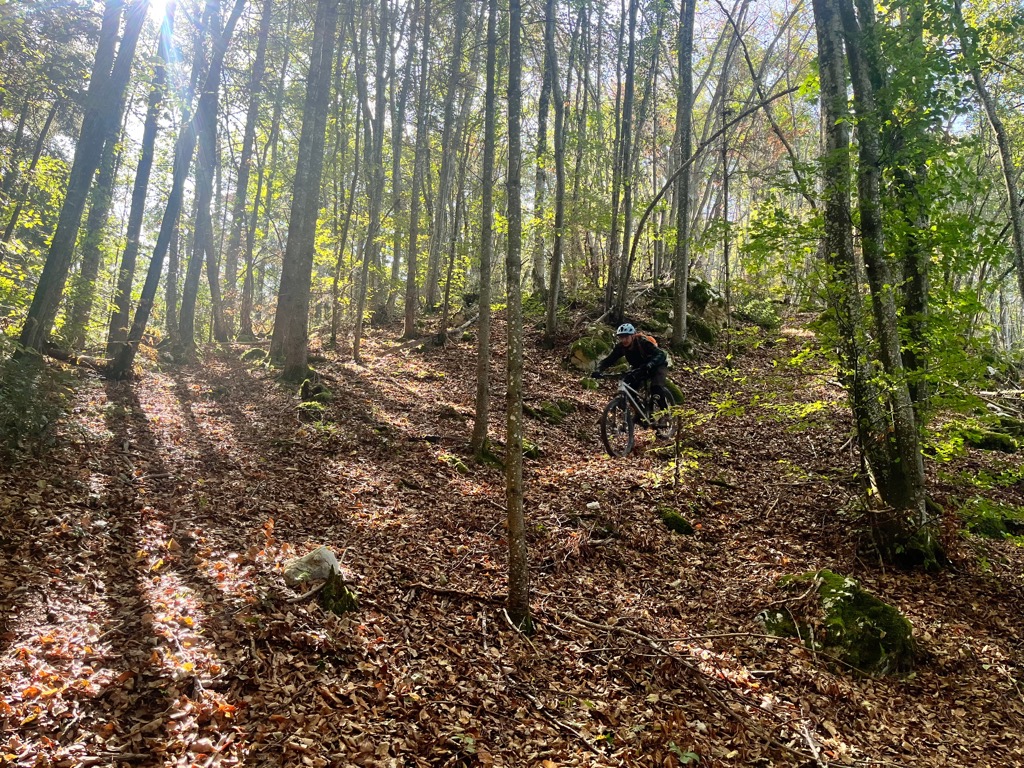
Full Suspension Pros
- It’s like riding a cloud. There’s nothing like the feeling of riding a full-suspension bike downhill.
- Technical terrain. Difficult downhill tracks with lots of rock are much easier with a full suspension. Technology has allowed athletic beginners to start picking their way down steep, techy trails much earlier in their progression.
- Jumps. The proliferation of machine-built jump trails at bike parks and full suspension technology have made it easy to start catching air.
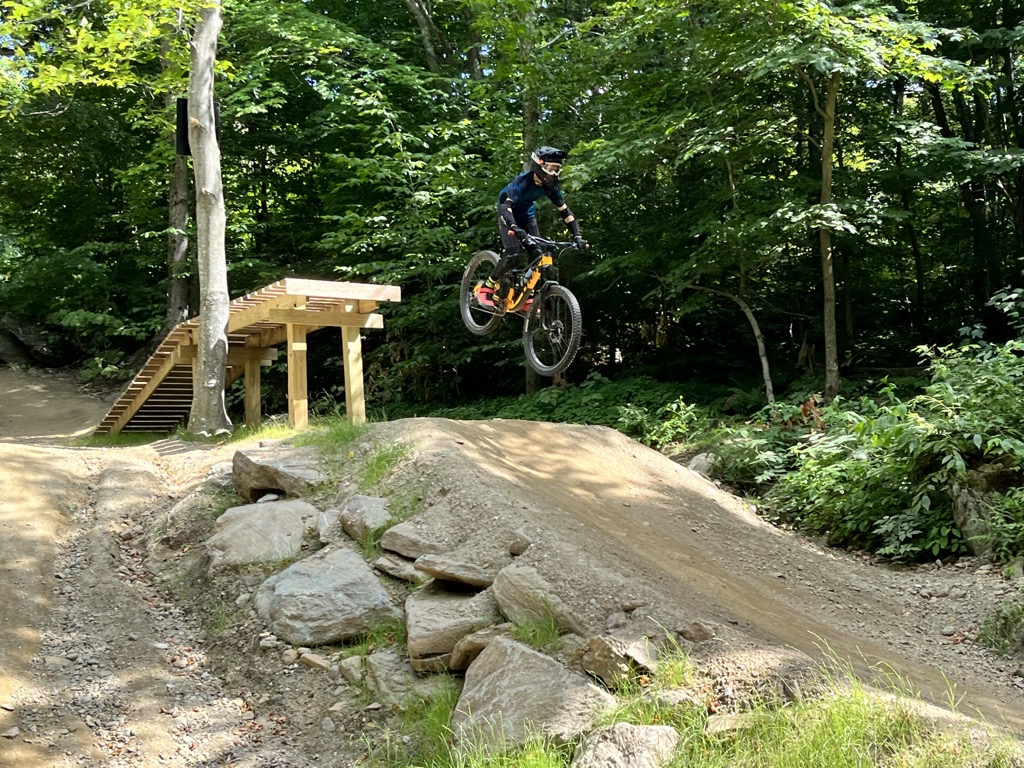
Rent, Then Buy
Another piece of advice is to rent, or “demo,” as it’s often called in the industry, several bikes before making a decision. You’ll likely have already done this to decide whether you wanted an eMTB/classic or hardtail/full suspension. Usually, you can’t rent the car or house you’re considering buying. But you can test-drive the car and visit the open house. Fortunately, with bikes, you can run them through the ringer for a day on the trails. You can even rent bikes for a longer term at some shops.
I’m not a fan of excessive consumerism; if you’re going to buy a bike, you want to know that you’re going to use it. My advice to absolute beginners is to spend several days riding to see if it’s actually something you’ll be committed to before buying a bike.
Moreover, you must dial in important choices like frame and wheel sizes. In particular, be aware of buying a bike that’s too big for you. I see this far more often than people buying bikes too small, especially with wheel size. I firmly believe that most people would have far more fun with a 27.5” wheel rather than the more popular 29”. The bike industry pushed 29ers hard because they had to sell new products, and 29ers made it easier for intermediates to progress into advanced terrain. Now, the industry has embraced the “mullet” bike, with a 29” front and 27.5” rear, which is definitely more ideal for most riders than a full 29er.

Buying Tips
Buying a bike is like any other big purchase. Here’s an outline of tips for when you do decide to buy a new whip.
- Consider warranties. Bikes break a lot, and a wise consumer can save epic amounts of money by choosing parts that offer a warranty. Try to find frames with lifetime warranties.
- Read or watch reviews. You can’t demo every bike, but you can watch experts discuss the pros and cons of each bike.
- Bikes go on sale. There was a bottleneck in the supply during COVID, but there is now a glut on the market. Exercise patience, and you’’ be able to find some models for 40% off or more.
- Understand components. The components on your bike, i.e., the wheelset, cranks, suspension, etc., are just as important as the frame.
- Direct-to-consumer brands, such as YT and Propain, have upended the bike market with lower prices for frames kitted with the same components.
- I feel obliged to tell you to support your local shop. It’s important, but I understand that bikes and components are far cheaper online, so the local shop is becoming a losing proposition. However, some shops make up the difference with extra warranties and free service.
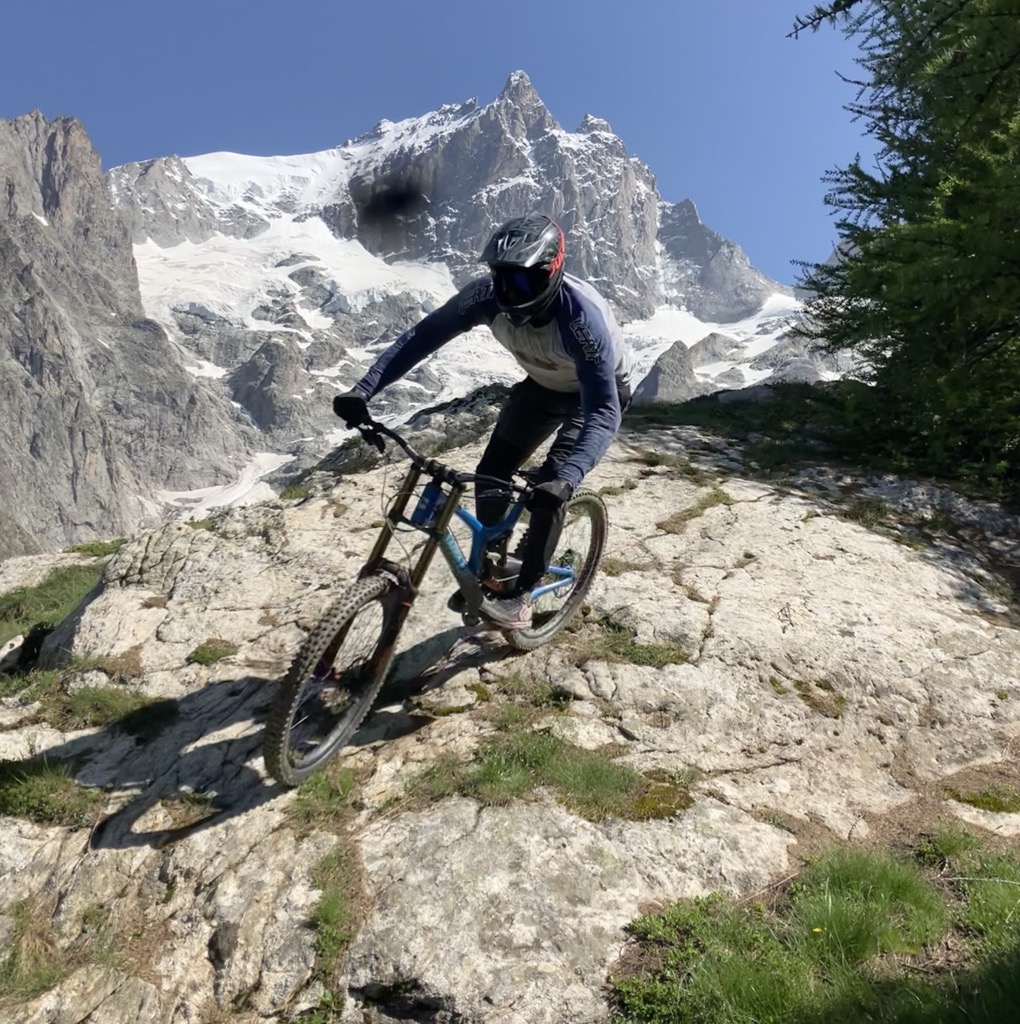
Pedals
There are two pedal options: flat pedals with spikes that allow your shoes to grip the surface and ‘clipless’ pedals, in which your foot is clipped to the pedal (despite the name, which refers to the original toe clips).
Flats
Flat pedals are like standard bike pedals, except they are made from alloy or rigid plastic and have a dozen or more sharp spikes on each side. Riders wear special shoes with a flat, sticky rubber bottom that engages with the spikes, allowing your foot to maintain contact with the pedals.
Nearly all freeride and slopestyle professionals use flat pedals. Flats are more playful. You can adjust your feet, drop a foot around corners moto-style, kick a foot out on a jump, or dab for stability on techy sections. Flats also require more technique to keep your foot attached to the pedal. It requires some finesse to keep your foot steady and not take a spike to the shin, especially on fast and rough descents.
Clipless
If you’re migrating to MTB from road biking, you’re already accustomed to a clipless setup, which is an advantage. Clipless pedals offer better pedal efficiency on the uphill than flat pedals and more security on descents. About 99.5% of professional racers, whether enduro, downhill, or XC, use a clipless setup.
In some ways, riding with clipless pedals is much easier than flats. Since your feet are connected to the pedals, you don’t have to have that body awareness to keep everything tight. For example, doing a bunny hop with clips requires ‘jumping up.’ Meanwhile, a bunny hop with flats is a dynamic technique that takes some effort and strength to master. The same goes for another flourish called a ‘whip,’ when you flick your bike sideways in the air.
The downside is that you must know how to separate yourself from your bike. I’ve always ridden flats, and getting on clips is a nightmare. For example, I’ll stop riding and forget I’m clipped in. Instead of stepping off my bike, I’ll forget to twist out of my pedal and topple over like a falling tree. Then there’s falling on the trail. I forget that I can’t stick a foot out on corners or rocks and take brutal, unexpected crashes in weird positions because I forget to twist out.
Helmet
For most of you, this goes without saying, but you always wear a helmet without mountain biking. I’ve only ever seen two people not wearing them in decades of riding. Seeing someone riding without a helmet is cringe, like watching a bad comedian. If you don’t wear one, not only will you likely have brain damage after a few months, but you won’t have met any other cool riders. Nobody will want to talk to you. You’ll be like a liability on the trails.
The real question is whether or not to wear a full-face helmet. I wear a full face for added protection whenever I’m not pedaling, like downhill or shuttling days.
Glasses
Beginners might not think about this, but wearing eye protection while riding is essential. Otherwise, your eyes will be chock-full of airborne sediment in no time. A lot of mountain biking is in the shady forest, so it’s common to see people wearing clear-lensed glasses. One life hack is to buy a pair of safety glasses at the hardware store for ten bucks.
Basic Technique
Mountain biking technique is a complex subject that continues to evolve as the sport matures and technology advances. As an introduction, we can touch upon a couple of basic principles to launch your MTB life without looking like an idiot on the trails.
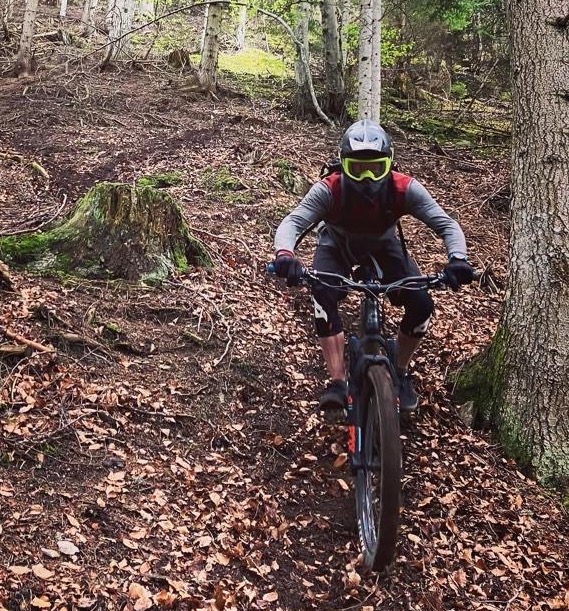
Out of the Saddle
You should never sit down on the seat while mountain biking unless you are pedaling. Short, aggressive pedal sections of trail can be done standing up, but long road climbs are obviously completed sitting down.
The rest of the time, it’s out of the saddle, with your pedals on an even plane, your head up, and your arms and legs bent into an athletic position. The flamingo stance, with one pedal down and one up, is a big no-no. The flamingo makes it impossible to assume an athletic stance and pedal strikes are inevitable.
It might seem obvious to most people, but as a mountain bike coach, I was struck by how many beginners didn’t realize they had to ride standing up.
One Finger on the Brakes
Less intuitive is the fact that we always ride with our pointer finger toggling the brakes. Gripping the handlebars with four fingers is slightly more difficult, but it maximizes reaction time, allowing you to ride faster and safer. It’s another non-negotiable bit of technique.
Finding Trails
There is no shortage of trails out there, even in places you would never expect. Mountain biking relies heavily on trail building, so urban areas with high population density often have great trails, even though they don’t have the best mountains.
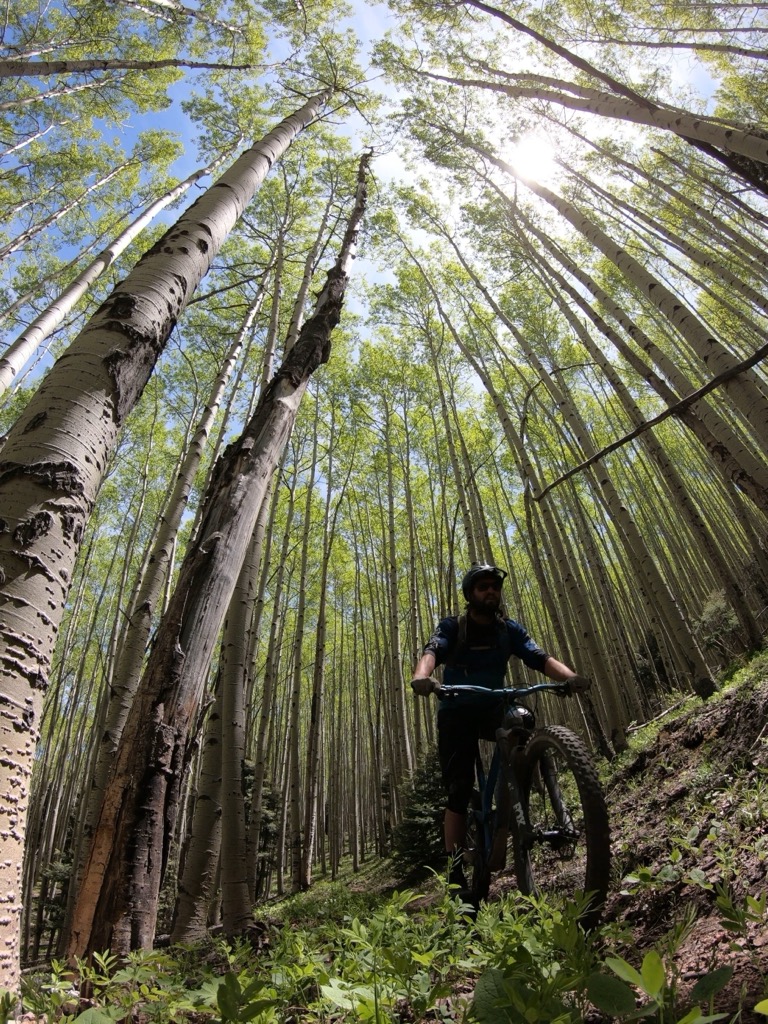
Because there is so much terrain conducive to MTB, the sport is much cheaper than skiing and surfing; you can live in an affordable palace and still have access to great trails. To ski, you have to live near the mountains (expensive), and to surf, you must live near the coast (expensive).
Mountain towns (often ones with a ski resort) obviously have great terrain for building trails. But there are usually fewer diggers and, especially in the U.S., more restrictions on the land. However, more and more ski resorts are using the lifts in the summer and building bike parks.
Thus, places with a large riding community to build and maintain trails can be surprisingly good for MTB, even if there isn’t much in the way of mountains. Many flat places, like the U.S. states of Michigan and Arkansas, have burgeoning mountain biking scenes. They don’t have big descents to offer, but dedicated trail building and plenty of accessible forests mean that new fun, feature-rich trails are built all the time.
One specific example in the U.S. is Knoxville, Tennessee. Knoxville has hills but isn’t known as a mountain town. A few years ago, they went all in on building trails. Now, a burgeoning mountain biking community lives there, many relocating for access to great trails and year-round riding.
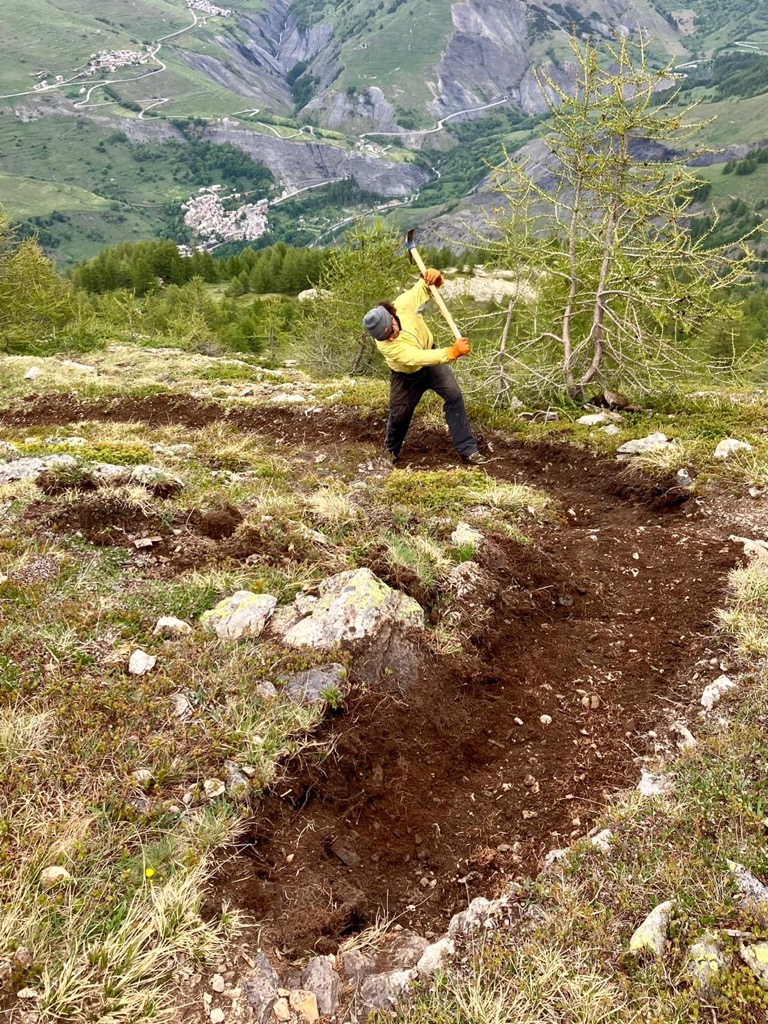
As far as Europe goes, one of the best locales to ride in France is Annecy, in the Haute Savoie region. I never suspected Annecy would have the best riding until I experienced it firsthand. Does Annecy have the most impressive mountains? Not at all. They’re beautiful but minuscule compared to the higher French Alps. But Annecy is a medium-sized city with a massive community of diggers who have created an empire of trails in the surrounding mountains and forests.
Another issue with mountain towns is the lack of non-service industry jobs. MTB bucks this trend because many urban areas feature nearby trail networks. Annecy is the perfect example. The city is home to rewarding, high-paying jobs, mainly in tech, the outdoor industry, academia, and government (it’s not exactly affordable, but it’s much less expensive than most of the French ski towns).
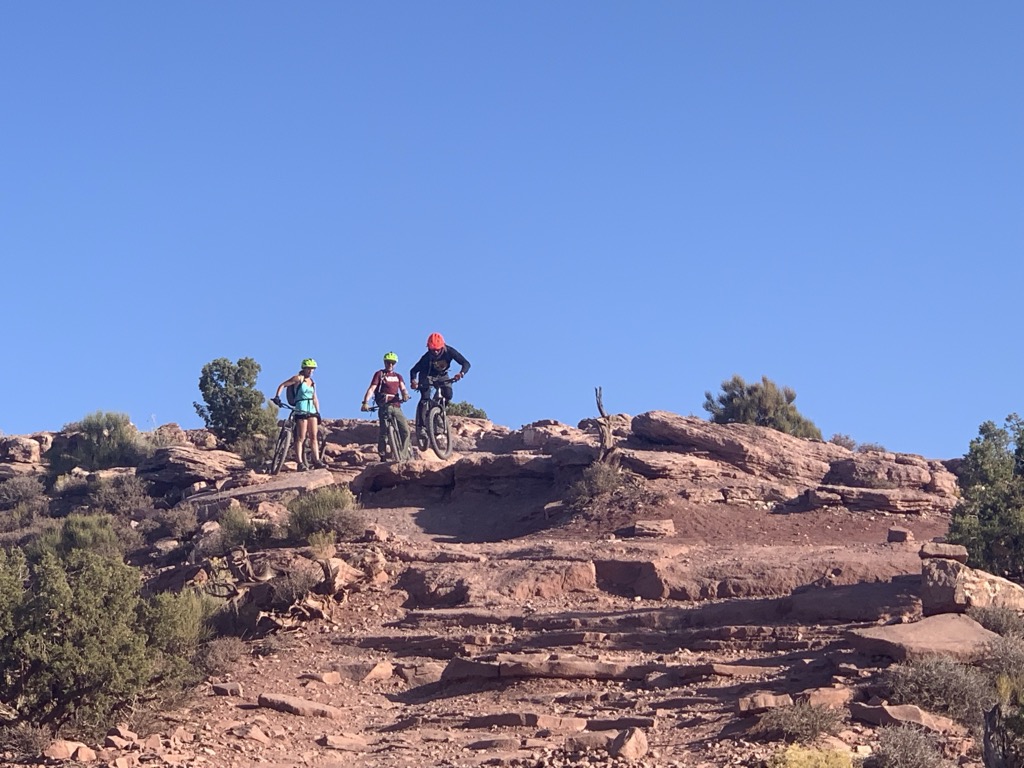
Using Apps
Apps are the best way to find mountain biking trails. I use two apps: Trailforks and Strava.
Trailforks
Trailforks is the gold standard of trail apps. The app used to be free but is now available for about $3 a month. It’s worldwide and includes a wide range of sanctioned and unsanctioned mountain bike trails and road climbs.
In addition to the sheer volume of trails, the app’s social component sets it apart. There is a lot of user engagement, so you can often get up-to-date information on trail conditions. If users have tracking turned on, you can see how many times a trail has been ridden in the past six months. Users can also leave reviews and comments on trails. As if that wasn’t enough, there’s also a gallery where users can add photos and videos of a trail.
This app is worth every penny for anyone serious about mountain biking, especially if they travel a lot.
Strava
Strava is famous as a tracking and fitness app rather than a repository of trails. However, two features of this app make it almost as important as Trailforks. First, there’s the ‘segments’ section, where you can parse through segments people have created. These segments are public; anyone can make one, and everyone else can see it. Sometimes, you’ll find trail segments that aren’t on trailforks.
The second helpful feature is the ‘heatmap,’ the most brilliant tool for finding unsanctioned mountain bike trails. Every time somebody tracks a ride, it shows up as a tiny trace on the map. Over time, as more people do that ride, the trace grows “hotter” on the map. I’ve found lots of fun trails this way.
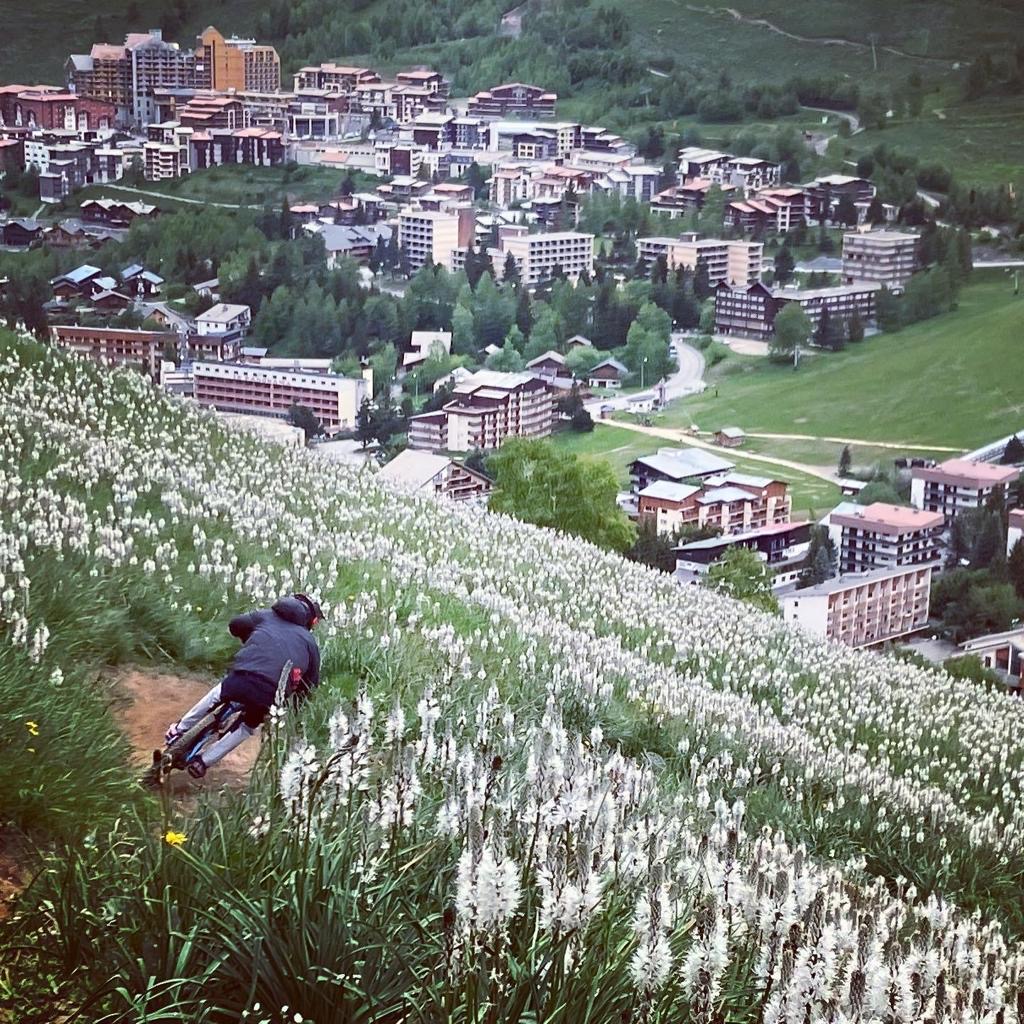
Trail Difficulty
Trail ratings are similar to ski slope ratings. In the U.S., Canada, South America, New Zealand, and Australia, you’ve got green, blue, black, and double black (denoted as red on trailforks).
Europe is the same, except red and black are switched - this can get confusing. So red is equivalent to black in the U.S., and black is actually double black. On Trailforks, a ‘proline,’ a really difficult or dangerous trail, is denoted as orange.
This article targets beginners who want to start with green and blue trails. However, with full-suspension bikes, many athletic beginners will progress quickly from there.
One element of a truly excellent MTB trail is that it will be fun for riders of all levels. Designing features so that a new line always appears as you go faster is one of the highest arts of trail building.
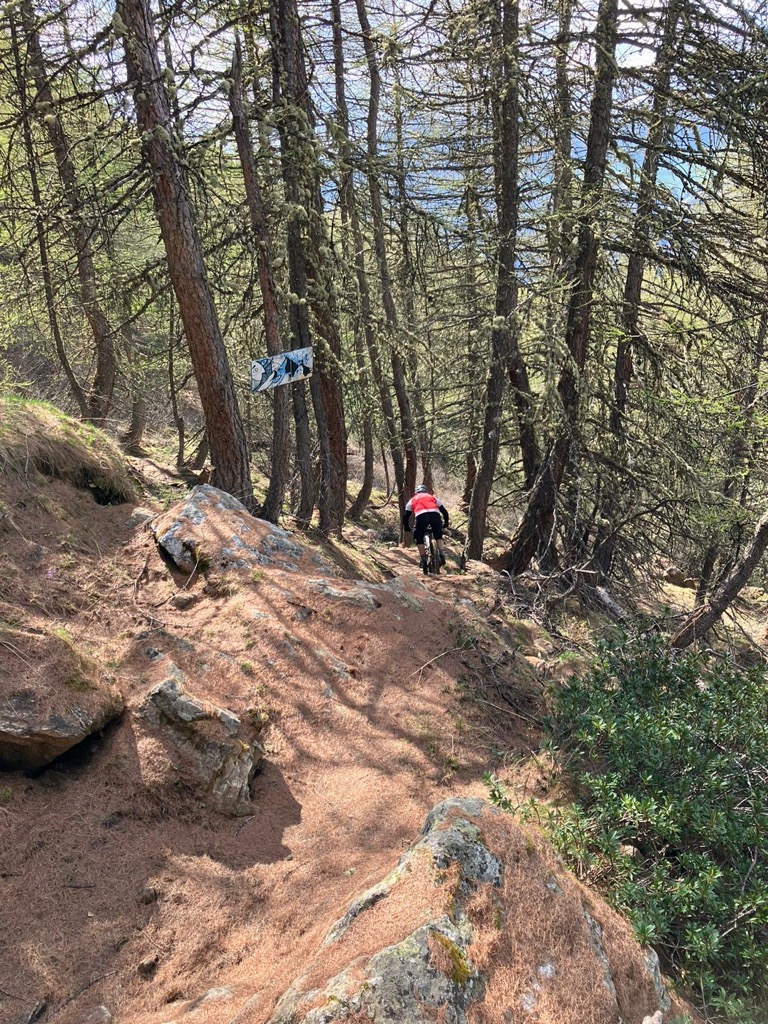
Getting to the Trails
Some folks will live proximate to a trail system and will be able to ride from their door. Unfortunately, mountain biking often requires us to travel to another location before riding. There’s an entire industry based around transporting bikes.
Let’s start with public transportation. Public transportation is usually not ideal for riders because trailheads are often in remote areas not serviced by buses. The best chance of finding good public transit is in ski towns where a bus infrastructure already exists, and the trails are on the ski slopes.
Driving is most often necessary, which means figuring out how to transport your bike in your vehicle. There are a few options.
- Rear Bike Rack: Although I don’t have official statistics, I would say that rear bike racks are the most popular type for mountain bikes. They’re secure and easy to lift a heavy mountain bike onto, which has become even more essential with the rise of eMTBs. They can fit anywhere from one to six bikes (the latter being the ‘North Shore’ style rack where the bikes hang). Even if you have just one bike, the capacity for more makes you a desirable riding partner.
Unfortunately, you need a trailer hitch on your vehicle, which can be expensive. Also, another driver could rear-end your car and damage your bike(s). Or, even more likely, you could reverse into something.
- Roof Bike Rack: Roof racks are secure, and your bike is less likely to sustain damage from another vehicle.
A few issues make them less popular for mountain bikes. First, bikes are heavy, and repeatedly hoisting them is a wicked pain. Second, they significantly lower your fuel economy, even when the bikes are not on the roof. Roof racks will likely increase total fuel costs by about 15%, translating to hundreds of dollars or euros for most people. In addition, the racks themselves are expensive. Lastly, you can only fit two bikes.
- Tailgate Pad: Pickup trucks are the most readily equipped to carry a bike. All you need is a tailgate pad, which you can find for under a hundred bones. You can also use an old blanket, which will be equally effective, as long as you tie the bikes into the bed before a long journey. Tailgates can also fit many bikes, usually four to six, depending on your truck's size.
The only downside is that the bikes often get scratched, especially when there are several. We call these scratches “shuttle scars.”
- Put Your Bike Inside Your Car: The last main option is to put your bike inside the car. You’ll need a wagon or an SUV for this option. I’ve just been carrying my bike in the car for the past year. I have a Škoda Octavia (similar size and shape to a Subaru Outback, for those who don’t live in Europe) and can easily fit two XL-frame bikes with the back seats down. The upside here is that it’s free; it only cost me the price of a protective tarp (€5).
Storing my bike inside the vehicle has a couple of massive advantages. Most importantly, my bike is not exposed to road grime. With all other racks, it’s important to watch off the sensitive bits of your bike (suspension) before riding because grit, oil, salt, and other nastiness on the roads will get all up in there and wreak havoc.
Secondly, I never worry about my bike getting stolen. Even if a thief smashed a window, the doors would remain electronically locked, and they wouldn’t be able to fit the bike through the windows. Any thief with a cordless angle grinder can steal a bike quickly and efficiently off an external rack.
One issue is that I have to take the front off, and dirt gets in the car (another reason why I bought the tarp.
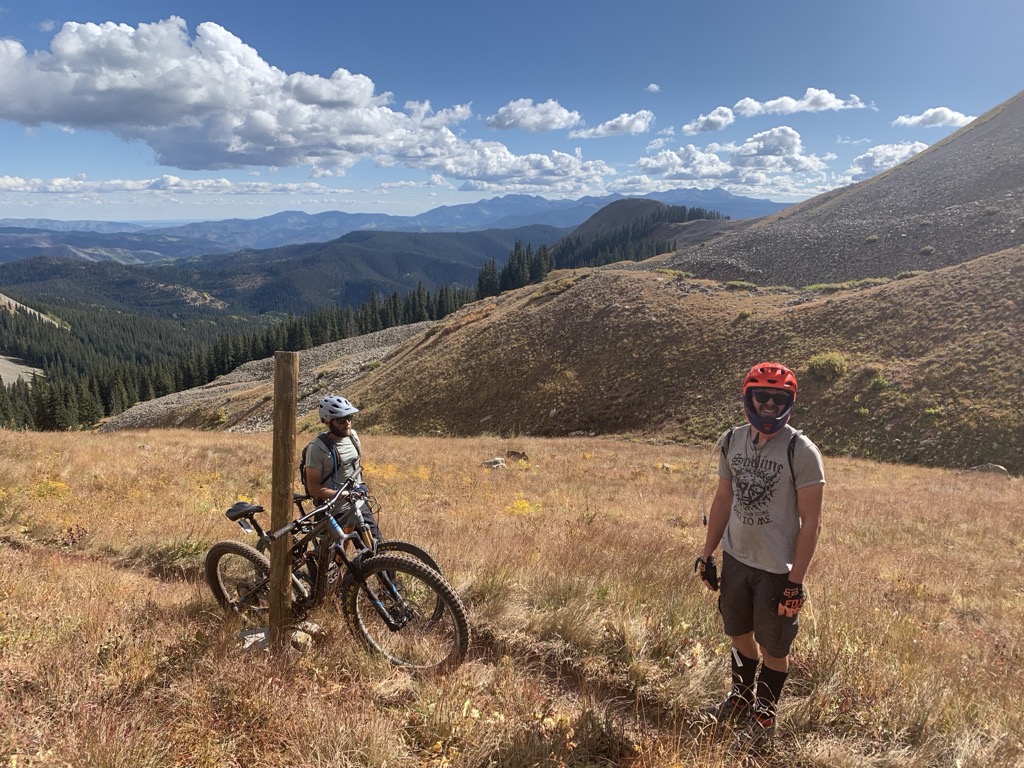
Transporting Your Bike on Airplanes
Traveling with a mountain bike is one of the best ways to travel the world. Nothing beats exploring a region’s natural places with a bicycle. It won’t take long before you vow to never step inside another overcrowded cathedral again. After all the exercise, you’ll have an appetite for all that exotic, yummy food and be more likely to sleep well in a foreign bed.
There are two ways to take your bike on an airplane. Both require partial disassembly but nothing too serious.
Bike bags are the best for expensive mountain bikes, offering superior protection and transportability. However, they are expensive, likely between $300 and $500.
The cheaper option is to put your bike into a cardboard box. You can find these boxes at bike shops; all the new bikes are delivered in them. Many shops save them to pass on to customers, sometimes for free. On the other hand, dealing with the box during the trip can be a drag, both figuratively and literally; because there are no wheels, you’ll end up dragging a huge box around until you assemble your bike.
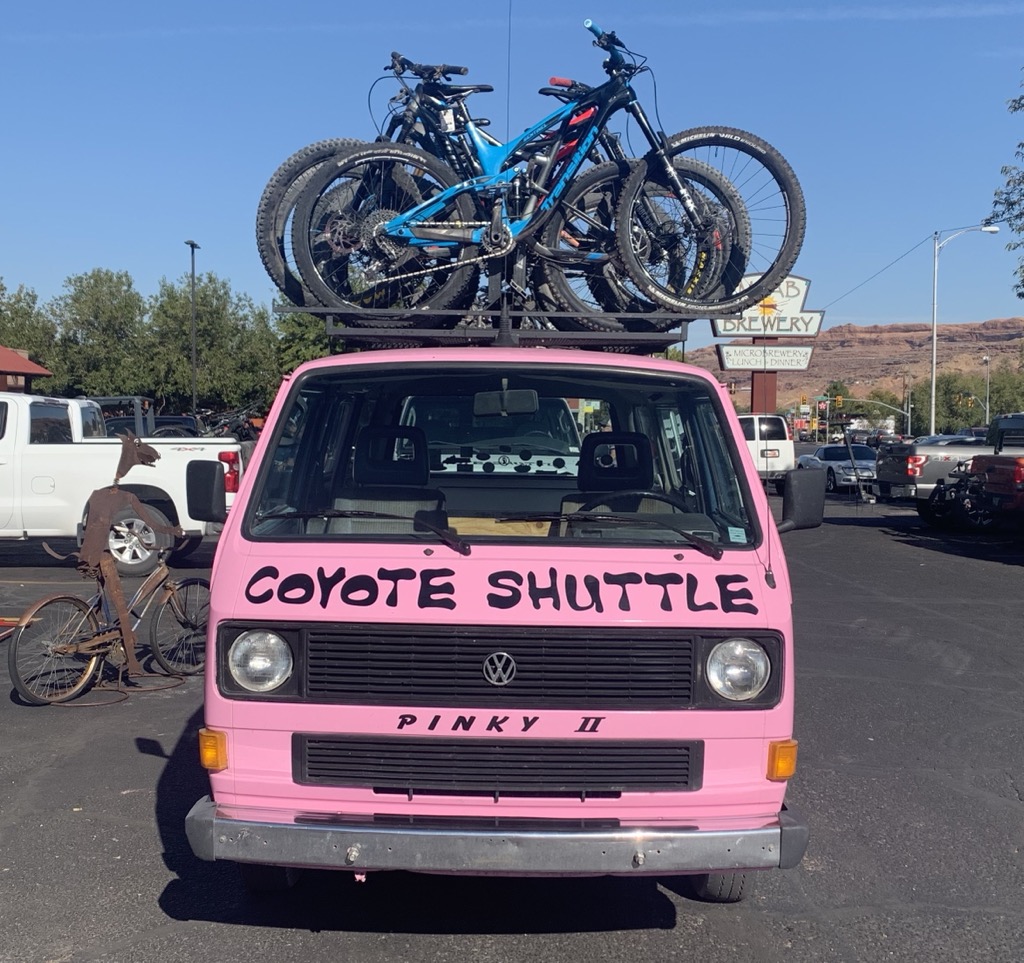
Improving Your Skills
I’ll start with the obvious point: practice. Naturally, you must practice to improve. However, if you stick with mountain biking, I can almost guarantee you’ll come to a point where your progression will plateau. That’s when it’s time for the homework.
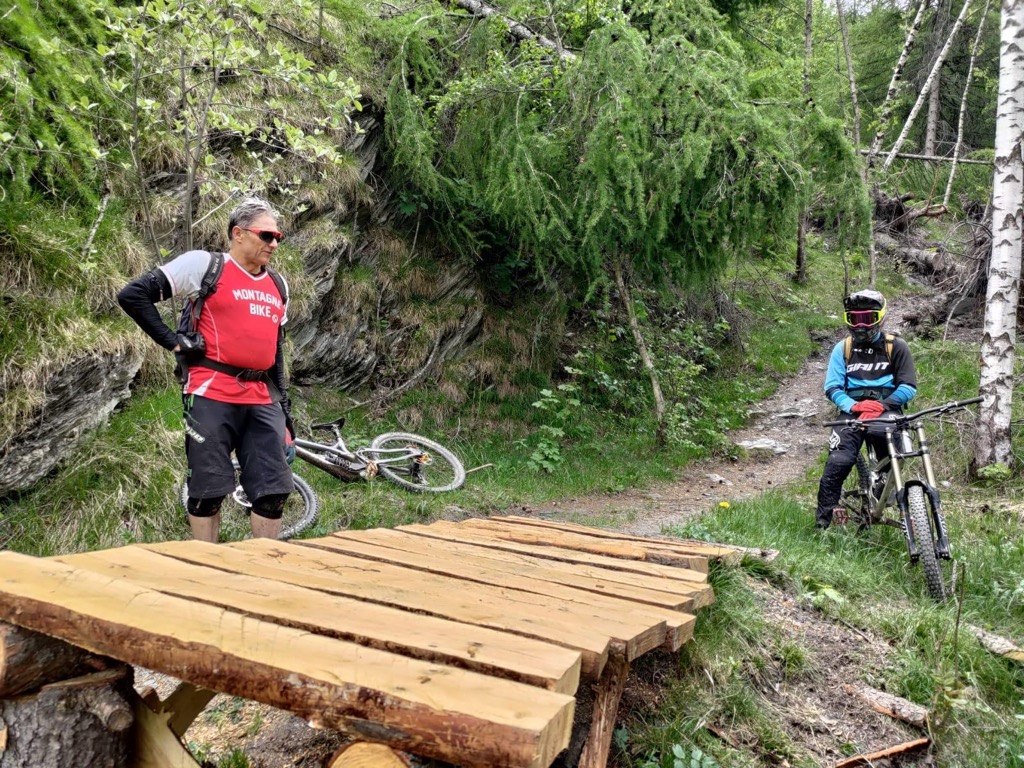
YouTube
After practice, there’s nothing better than YouTube University. There is no shortage of MTB content on the ‘Tube, where the community tends to embrace humorous, entertaining content. Check out this complete Trailforks list of all the most influential MTB channels; I’ll throw out a few of my favorites.
- Jeff Kendell-Weed: Jeff is the man. He’s a great rider (ex-pro) and now makes his living making informative content. His tutorials are top-notch, and he also does many videos on various other topics, like comparing eMTBs to classics, introducing trail networks, etc.
- Sam Pilgrim: Sam embodies the best of British humor. He’s a former champion, and his greatest strength is dirt jumping/slopestyle. Nevertheless, his prowess on any form of two-wheeled object is stunning. Whether it’s trail or urban trials riding, Sam lays it down.
- The Loam Ranger: These are hilarious videos, primarily for pure instruction. When I was mountain bike coaching, I’d use rainy days to show Loam Ranger videos; he could explain it better than me, anyway.
Meeting People
Socializing is one of the keys to living a longer, happier life. Meeting people mountain biking is therefore paramount for not only your happiness but also your improvement. Especially as a beginner, it will be easy to find people who are much more experienced and eager to share their knowledge with you. Plus, they’ll show you trails, give you shuttle rides, and maybe even rescue you if you get injured. Be social and outgoing on the trails; it will go a long way.
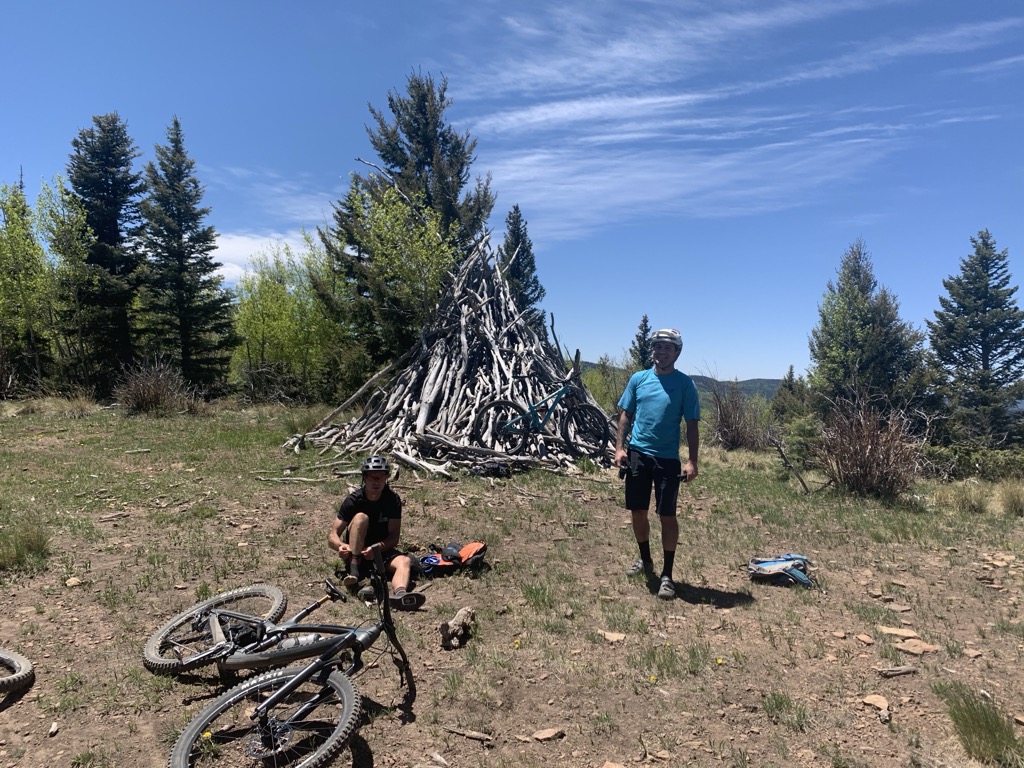
Lessons
As always, lessons are an option. To find a proper bike school, you’ll usually have to go to a bike park. Fortunately, MTB instructors are much cheaper than ski instructors.
In Europe, the terrain is much bigger, and guides are more popular than in the U.S., both with skiing and now MTB. I’m not sure about the rest of Europe, but the certification process in France is highly rigorous.
Your Local Bike Shop
Local bike shops are integral to the fabric of the MTB community. In addition to selling things related to bikes, they often host events like group rides and trail-building dates.
Trail-building, in particular, is a crucial component of the sport of MTB. The sport relies upon a lot of backbreakingly hard work, but it’s also one of the few sports where you can build your own playground. Every year, there are more and more trail builders because the sport of mountain biking continues to grow, funding is increasing, and it takes more builders to maintain old trails as well as build new ones.
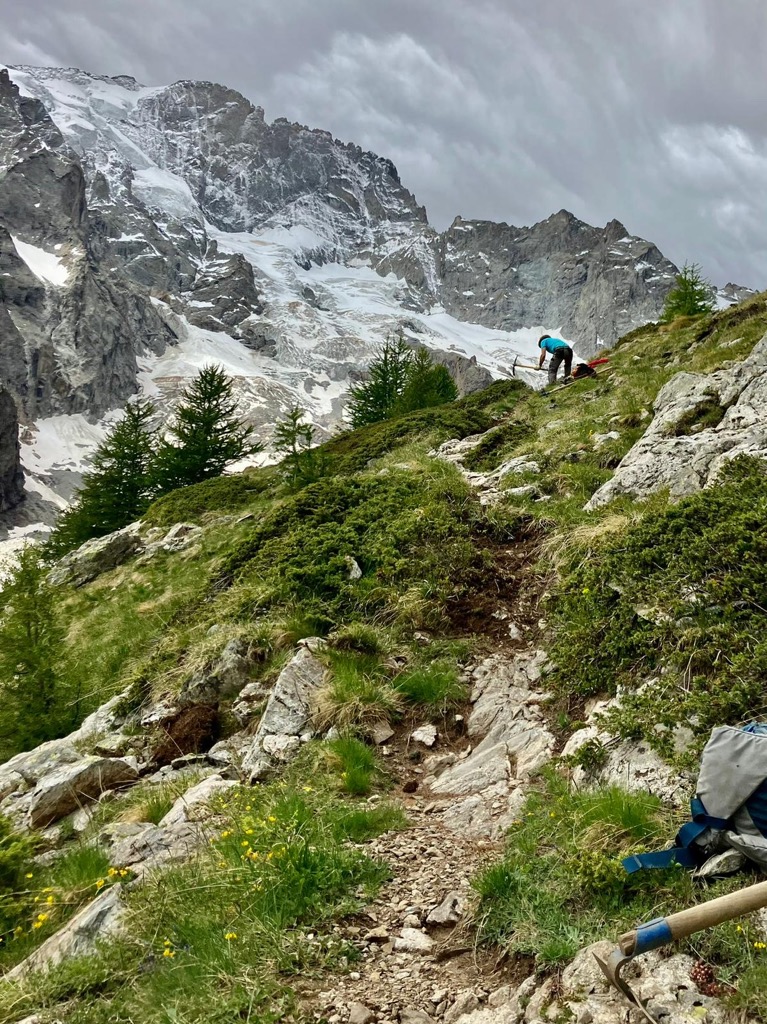
Bike Maintenance
As much as I love local bike shops, performing one’s own maintenance is also rewarding and cost-saving, assuming you do the work right and don’t break anything further. Even more importantly, waiting for a shop to finish the job can be mind-blowingly frustrating. You’ll probably have only one bike, and it will break often. You could spend a solid chunk of the riding season waiting for your bike to get fixed.
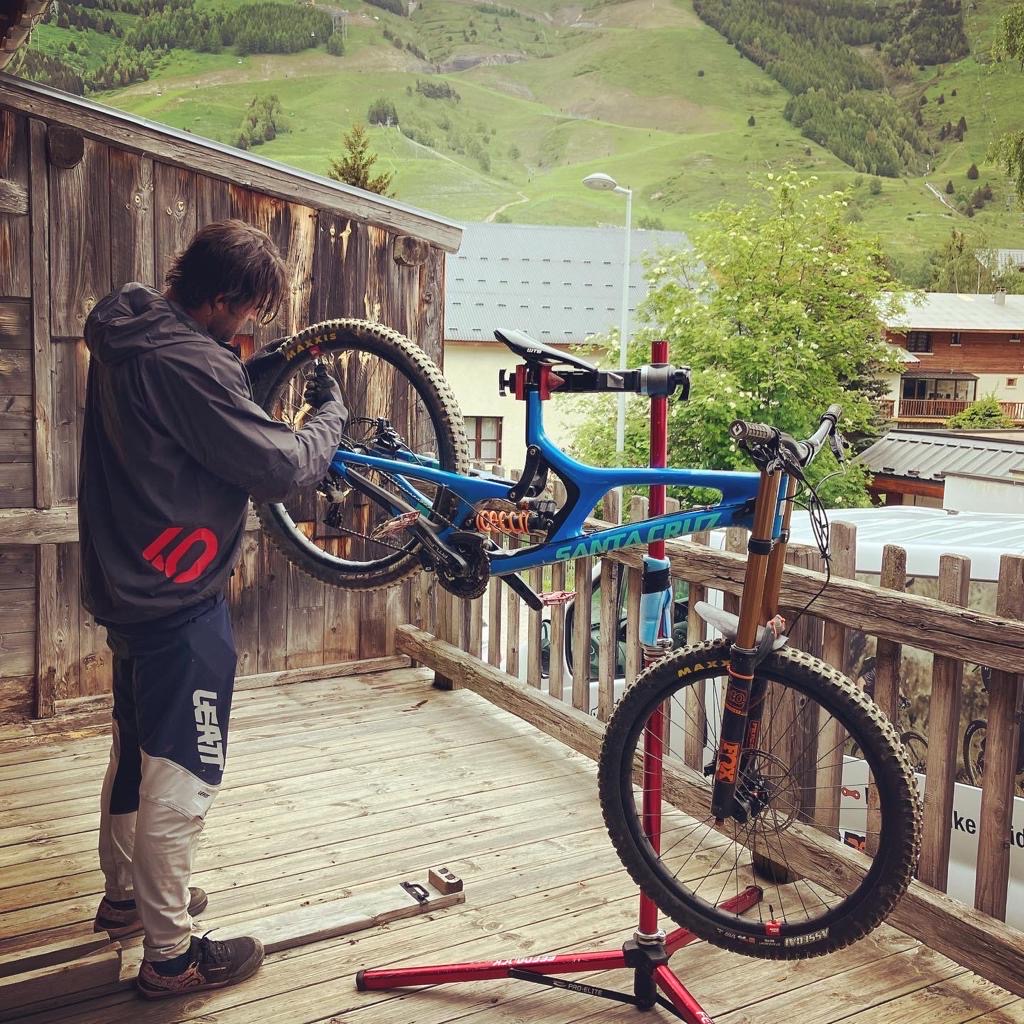
You’ll have to buy tools to do the job and some things you likely won’t want to buy because they are expensive. One example is a truing stand for wheels, but you can just take your rim into a shop, where they can throw it in a truing stand on the fly. Here are my suggestions for a few basic tools and skills that will allow you to fix your own bike 90% of the time.
For starters, a thorough tools/parts kit includes an air pump, chain lube, tire levers, sealant, tubes, every size Allen key, shock pump, extra pedal spikes, chain breaker, pliers, cutters, bleed kit, brake fluid, extra pads, extra tire, rim tape, spoke key, bearing grease, zip ties, a few Terry cloths, a bike wash kit, extra derailleur cable, and micro components like derailleur cable end caps.
- Tire levers to swap tires/fix flats. Rim tape if you ride tubeless, extra tubes if you ride tubes. You can also throw a tube in a tubeless setup as a quick fix. You should never have to go to the shop for a flat.
- Brakes. You can bleed them, change the pads, and whatever else you need to do. You’ll have to buy a bleed kit/fluid, which will pay off after two bleeds.
- Derailleur adjustments. YouTube University has plenty of videos on how to adjust any brand of derailleur. You don’t need special tools.
- Bearings. Once a season, you should take your frame apart and clean/re-grease all your pivots and your fork.
One thing I definitely don’t do myself is suspension services. Some mechanically-minded riders with a clean workspace can dabble with no problem, but for most people, it’s easier to take shocks, forks, and dropper posts to a mechanic.
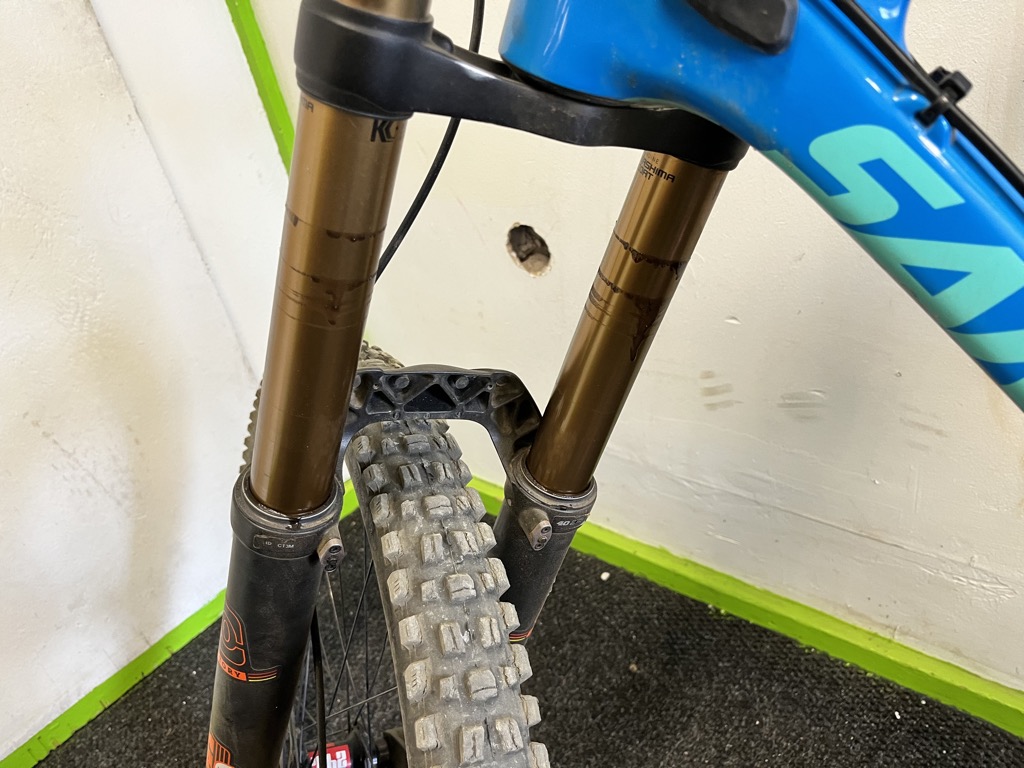
Injuries
Injuries are a central component of mountain biking. Going from zero to frequent riding, your body will benefit from this sport. But as time wears on, sports injuries often begin to take their toll.
Given that the ground is rather hard and that you will fall during this sport, MTB is replete with injuries. The vast majority of these are minor scrapes and bruises. I would estimate that I get some sort of scrape or bruise on about 80% of rides.
Then you have the slightly more serious injuries, like strains. Fingers, wrists, shoulders, knees…sometimes you’ll bump something around in there, and it hurts for months at a time. I fell almost ten months ago and jammed my left middle finger. Up until a month ago, it was still hurting.
Fractures are common. Fingers and wrists, of course, but also collar bones, ribs, arms, elbows, feet, and toes. Collar bone fractures are particularly prevalent because riders tend to fly over the handlebars onto their shoulder.
The most common devastating injuries include those to the head and spine. Always wear a helmet. Many folks also wear spine protectors, especially if you don’t have to pedal (bike park, shuttle laps).
Other protective gear includes stiff shoes, durable pants, knee pads, protective shorts, elbow pads, and chest and spine protective vests.
Contrary to what some people believe, serious MTB injuries can be avoided. I’ll go over the two main ways below.
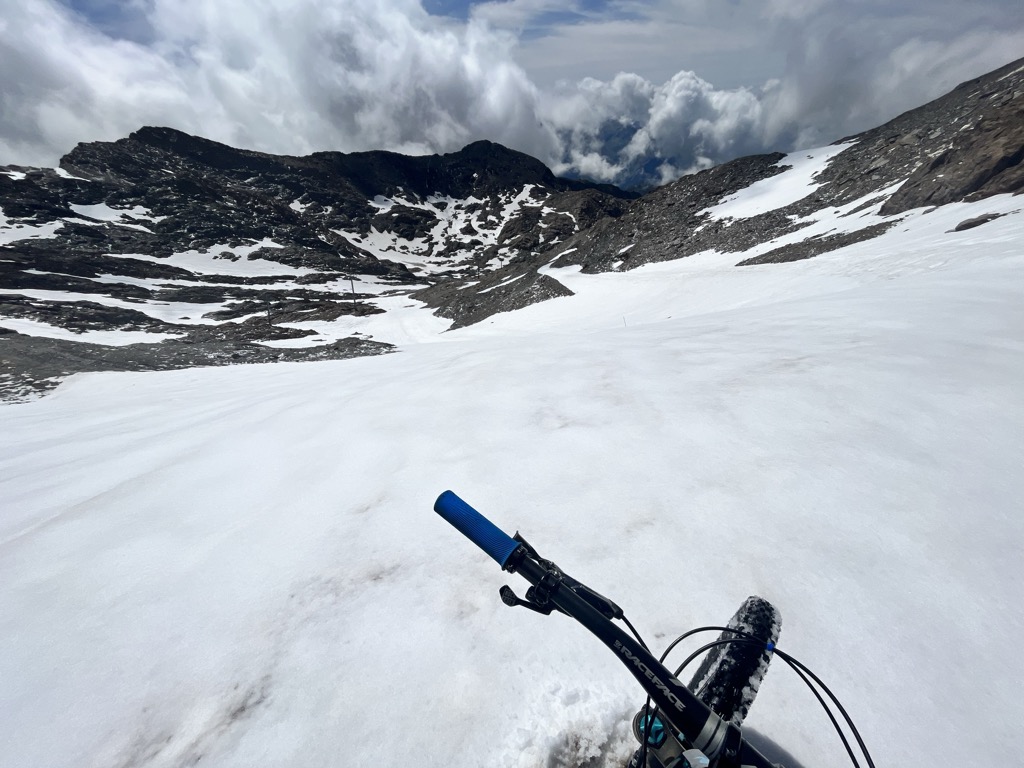
Learning How to Fall
Falling is inevitable, but a proper response can mitigate the worst consequences. The problem is that preparing that response in advance is difficult; it just requires trial and error and eventual improvement, like anything else.
My experience has taught me a few tricks. Often, I try to bail on my bike if I know I’m about to go down or even if I’m already in the gutter. Getting wrapped up with your bike during a fall always seems like playing with fire.
More importantly, you want to stay as limp as possible. Maleable. It’s the same principle that applies to drunk drivers, who are statistically far more likely to survive the fatal car crashes they’ve caused. Their bodies are relaxed and relaxed and therefore, less likely to be damaged by sudden impact.
Obviously, it's easy to say but much harder to execute in person. The most important thing to understand is that the best riders in the world are loose when they ride, just like any other sport. The same goes for most sports. Whether you're watching the NBA finals or the FIFA World Cup, the players are loose. Powerful, agile, responsive, but also loose. Therefore, the best advice I can give to avoid injury is to flow with your bike down the mountain. Don’t overgrip the handlebars. Be dynamic; the best suspension is your own body. When you do fall, your body will already be relaxed and able to absorb the impact.
Knowing How Far To Push Yourself
Always maintaining control is the other most essential aspect of injury avoidance. That sounds obvious now, but clearly it’s more complicated; people get injured all the time, especially beginners. One reason is that mountain biking is really fun, and riders get tempted to push themselves beyond their level without realizing it. Another situation is when riders plateau at a certain level. You may improve exponentially initially, but as you progress in the sport, most people find it harder to improve. Instead of having monumental advances day-to-day in your riding, it becomes minor tweaks here and there. It can be tempting to push the limit of control while seeking new ways to improve.
It’s a fine line between pushing yourself to get better and losing control, and it will vary from person to person. MTB progression can be like an allegory of life: overcoming fears, powering through, knowing when to back away, etc. Hopefully, you will learn something positive about yourself; this is one of the sport's greatest gifts.
Conclusion
The hardest part of writing this article was the length. I would think to myself, should I include more details? I introduced a broad spectrum of topics that a beginner might wonder about. Often, I had to cut myself off to stick with just the introduction.
I understand that it won’t appeal to everyone, but it makes me smile to think that lots of people out there will one day discover the world of MTB. It’s a whole new adventure, and you can completely rediscover places you thought you knew.
